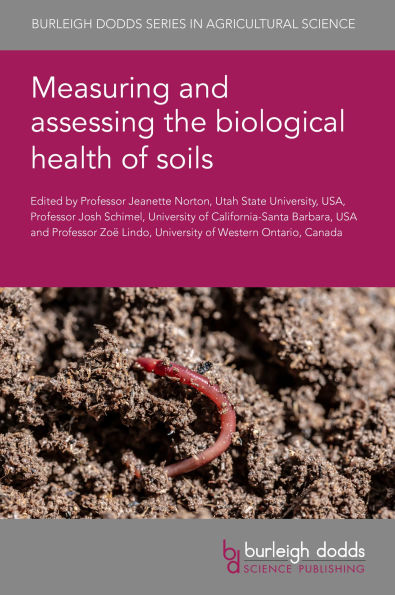Dr Jeanette Norton is Professor of Soil Microbiology in the Department of Plants, Soils and Climate at Utah State University, USA. She is a Fellow of the Soil Science Society of America. Professor Norton is internationally known for her research on ways of analysing the soil microbiome, including its role in nitrogen and carbon cycling.
Dr Josh Schimel is Professor of Soil Ecology in the Faculty of Ecology, Evolution and Marine Biology at the University of California-Santa Barbara, USA. Professor Schimel is Co-Editor in Chief of Soil Biology and Biochemistry. His research focuses on role of soil microbes in controlling ecosystem-scale processes.
Dr Zoë Lindo is Professor in the Department of Biology at the University of Western Ontario, Canada. Professor Lindo is Co-Chair of the FAO International Initiative on Soil Biodiversity (NETSOB) and Editor-in-Chief of Pedobiologia: Journal Of Soil Ecology as well as being an acknowledged expert on soil biodiversity and its impact on ecosystem function.
Dr Jeanette Norton is Professor of Soil Microbiology in the Department of Plants, Soils and Climate at Utah State University, USA. She is a Fellow of the Soil Science Society of America. Professor Norton is internationally known for her research on ways of analysing the soil microbiome, including its role in nitrogen and carbon cycling.
Dr Josh Schimel is Professor of Soil Ecology in the Faculty of Ecology, Evolution and Marine Biology at the University of California-Santa Barbara, USA. Professor Schimel is Co-Editor in Chief of Soil Biology and Biochemistry. His research focuses on role of soil microbes in controlling ecosystem-scale processes.
Dr Zoë Lindo is Professor in the Department of Biology at the University of Western Ontario, Canada. Professor Lindo is Co-Chair of the FAO International Initiative on Soil Biodiversity (NETSOB) and Editor-in-Chief of Pedobiologia: Journal Of Soil Ecology as well as being an acknowledged expert on soil biodiversity and its impact on ecosystem function.
Dr Paolo Nannipieri is Emeritus Professor at the University of Florence (Firenze), Italy. He has authored/co-authored around 250 publications and has edited eight books, including the 3rd edition of Modern Soil Microbiology. Dr Nannipieri is the Editor-in-Chief of Biology and Fertility of Soils and member of the Editorial Board of Arid Soil Research and Rehabilitation. He has been the International Representative of the Italian Society of Soil Science at IUSS and president of the Italian Society of Agricultural Chemistry and of the Commission Soil Biology of the IUSS.
Professor Bruce Hungate directs the Center for Ecosystem Science&Society (Ecoss) at Northern Arizona University, where he is a Regents’ Professor of Ecosystem Science and the Frances B. McAllister Chair in Community, Culture&the Environment. He co-founded NAU’s Professional Science Master’s in Climate Science&Solutions and has been recognized as an Aldo Leopold Leadership Fellow, Fellow of the American Association for the Advancement of Science and a member of the American Academy of Microbiology.
Professor Sarina Claassens is Head of the School of Molecular and Life Sciences and Dean of Science at Curtin University, Australia. With over two decades of academic experience, she has held international leadership roles across diverse educational contexts. Her research focuses on soil microbiology with applications in agriculture and harsh environments, drawing on interdisciplinary approaches that integrate biochemistry, soil biology, and analytical chemistry.
Dr Deborah Neher is a Professor Emerita in the Department of Agriculture Landscape and Environment at the University of Vermont. She is a soil ecologist and her primary research interest is developing biological indicators for environmental monitoring of soil. She was the 2010 recipient of the HW Vogelmann Award for Excellence in Research and Scholarship at University of Vermont and 2015 recipient of the Deborah A. Neher Career Award in Soil Ecology given by the Ecological Society of America.
Joann K. Whalen is a James McGill Professor at McGill University and an Affiliate Professor with the African Genome Center at the Mohammed VI Polytechnic University (UM6P) in Morocco. Her research focuses on soil fertility and soil ecology in agroecosystems. She has published more than 250 peer-reviewed scientific publications and supervised/co-supervised more than 60 students at the M.Sc. and Ph.D. levels. Dr. Whalen is currently a Chief Editor for Soil Biology and Biochemistry, a Subject Editor for Applied Energy and a Review Editor for PNAS Nexus.
Dr Weixin Zhang is a full Professor at Henan University and has been honoured as the recipient of the Outstanding Youth Science Fund of Henan Province. He also holds the position of Chair of the Expert Technical Advisory Board for the Soil Biology Survey in the third national soil census in Henan Province. His research primarily focuses on the diversity of soil fauna and its diverse ecological functions.



